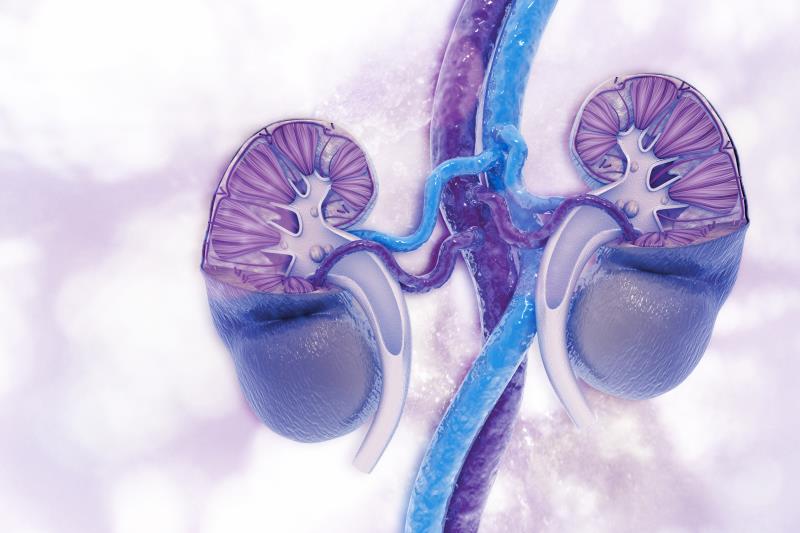
The novel polyethylene glycol (PEG)-coated collagen patch was safe and feasible to use for achieving intraoperative haemostasis in patients undergoing deceased-donor renal transplant (DDRT), a study has shown.
Achieving haemostasis during RT is particularly important given the increased risk of haemorrhagic complications in this patient subgroup. [Surg Technol Int 2016;XXIX:sti29/756] “[Moreover,] haemostasis can potentially be more challenging during DDRT as the operating surgeon is usually unfamiliar with the vascular anatomy of the allograft,” said the researchers.
Despite evidence reflecting the adjunctive role of topical haemostatic agents in different types of surgery, there have been no studies evaluating their role in RT. [Curr Opin Urol 2007;17:396-401; Hpb 2013;15:548-558; ISRN Surg 2014;doi:10.1155/2014/930803]
To evaluate the feasibility and safety of a PEG-coated patch in achieving haemostasis, 30 patients (mean age 62.5 years, 57 percent male) scheduled to undergo DDRT were randomized 1:1 to receive either the PEG-coated patch or standard haemostasis (ie, electrocautery and clips). Patients were followed 30 days postoperatively. [Can Urol Assoc J 2020;14:E1-E5]
Compared with standard haemostasis, use of the patch exhibited a trend towards less estimated intraoperative blood loss (237 vs 327 cc; p=0.11).
“Haemostasis was successfully achieved in all cases using the PEG-coated patch,” said the researchers, attributing the effect to the initial control of bleeding from the renal hilum and sinus regions.
There was also a trend towards a lower drop in haemoglobin in the patch arm 48 hours following surgery (22.27 vs 29.53 g/L; p=0.09). Similar transfusion rates were also observed between the patch and the standard treatment arm (4 vs 6; p=0.44), noted the researchers.
“Blood transfusion given to RT recipients often leads to broad sensitization … Prevention of sensitization requires efforts to avoid unnecessary blood transfusions,” said the researchers. “[The similar] transfusion rates … provides evidence for the safety of the PEG-coated patch.”
The rates of perigraft collection were also similar between the patch and the standard treatment arm (4 vs 6; p=0.44). “Perigraft collections after RT are common [and may] have considerable influence both on outcome and functional recovery of the allograft … This finding may suggest that the PEG-coated patch can be used without additional postoperative morbidity in this patient population,” said the researchers. [Digest Surg 2007;24:288-293; Surgery 2011;149:48-55]
Dual mechanism of action
The PEG-coated collagen patch has a dual mechanism of action – the PEG coating rapidly adheres to the tissue surface while the collagen layer facilitates platelet activation and adhesion, noted the researchers. “The combination of these two independent mechanisms can create rapid and lasting haemostasis by sealing the bleeding surface and accelerating the body’s clotting mechanism.”
“[Furthermore,] the PEG-coated patch is more convenient to apply than other adjunctive haemostatic agents … The unique mechanism of the PEG-coated patch to achieve haemostasis in combination with its ready-to-use design presents a safe and feasible option as an adjunctive haemostatic agent [in DDRT],” they added.
However, the subjective assessment of haemostasis might have contributed to bias, noted the researchers. Larger studies with direct comparisons with other haemostatic aids are thus warranted to reinforce the efficacy findings. Longer follow up periods are recommended to elucidate the long-term effect of the patch, as well as its impact on long-term graft function, they added.